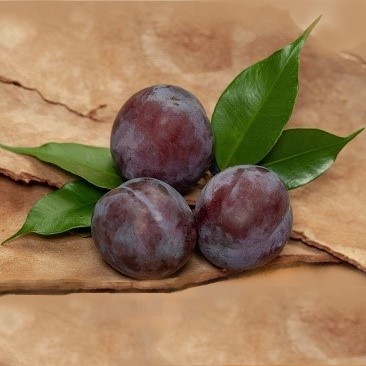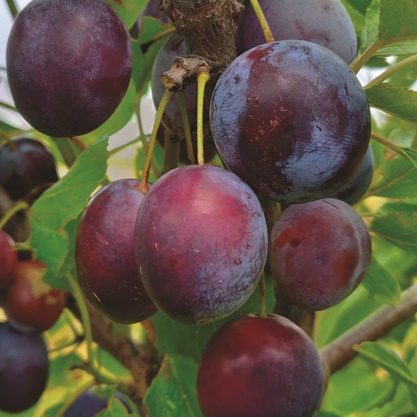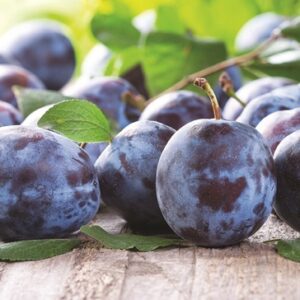European Plum : PEARL Semi-Dwarf (Marianna 26-24) (Orchard Grade)
$42.95
An 'orchard grade' is a tree that may be somewhat shorter, slightly crooked, or a bit scratched, or for some other reason is not a perfect front lawn specimen. These trees will work just as well in an orchard as a first or number one would, since they still produce the very same fruit.
This uncommon heirloom plum, developed by Luther Burbank in 1898, shows the 'Reine Claude' influence, putting it in the Gage plum category. Back in 1911, U.P. Hedrick described it this - 'rich, golden colour, large size, fine form, melting flesh and sweet, luscious flavour... unsurpassed in quality by any other plum'. The fruit itself continues to be profusely praised by all who encounter it. Although the tree is barely productive enough for commercial pursuits, Pearl is still a first-rate homeowner tree - hardy and trouble free, with regular yields of fancy, fresh eating fruit that is perfect for dying too.
SELF-FERTILE | ZONE 4/5 | HARVEST: MID SEPT.
Rootstocks
G41 Dwarf
G935 Small Semi-Dwarf
G969 Small Semi-Dwarf
G30 Semi-Dwarf
G890 Semi-Dwarf
Pollenator definitions
NEEDS A POLLENIZER ̶ means another tree of the same type or kind but a different variety must be blooming nearby at the same time.
EXAMPLE A Liberty apple and a Wealthy apple can cross-pollinate. Two trees of the same variety ie: ̶ 2 Wealthy apples, cannot cross pollinate because they are genetically identical.
Other trees are marked as SEMI-FERTILE. These will set fruit without a second tree. However they will often bear more, and sometimes larger fruit if another variety of the same kind of tree is nearby.
You can select 2 different trees of the same kind marked as NEEDS A POLLENIZER or plant one of those along with one SELF-FERTILE or one SEMI-FERTILE. Also consider ripening times ̶ a Goldrush apple might not start blooming before a Pristine is finished.








